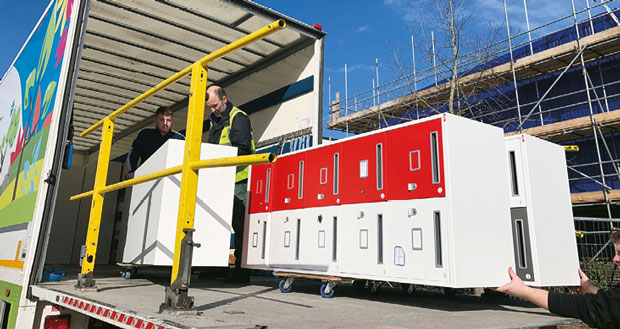 Rachel Houghton MD, Business Moves Group discusses ways to rethink the disposal of office furniture or furnishings to ensure they’re not gone to waste
Rachel Houghton MD, Business Moves Group discusses ways to rethink the disposal of office furniture or furnishings to ensure they’re not gone to waste
Waste management is a large part of any relocation service, with many projects including assets that are no longer wanted or are at the end of their lifecycle. The easy option would be to simply dispose of these items. However, better solutions are needed for those who want to meet their green goals.
The term ‘waste’ already has negative connotations; its definition means to fail or neglect to use something, implying that waste involves poor management. At Business Moves Group, we actively move away from the term ‘waste’. Instead, we focus on the solutions businesses can action for such assets.
SOCIALLY RESPONSIBLE PROCUREMENT
Within the consumer market, individuals are becoming more aware of where they choose to shop, the socially responsible accreditations held by those businesses, and what impact their shopping choices are having. While the corporate world was slower to adopt the same thought processes, tenders for the procurement of services and products now place greater importance on ESG requirements.
Having a clear furniture management strategy for handling unwanted assets should be the new norm. Ultimately, obsolescence through the purchase of bad-quality items and the unnecessary disposal of others affects the Scope 3 emissions for both the client and the service provider. These should be avoided, not only for improving the business’ climate reporting but also for the benefit of the planet.
CIRCULAR ECONOMY SOLUTIONS
It is important to consider the circular economy when addressing your waste management solution. The circular economy is a system where materials never become waste. Products are kept in circulation through processes like reuse, refurbishment, and recycling as a last resort.
When there are assets that are no longer needed, instead of jumping straight to recycling, we consider alternative avenues as standard practice. First, we assess the quality of the asset. Those items that are still in great condition can potentially be sold, helping to create additional cash flow for the client.
For those pieces that aren’t quite sale-worthy, there are a plethora of options for donation. At BMG, we work closely with various charities that take unwanted office furniture for reuse in places like state schools [pictured] or other businesses across the UK, improving the infrastructure in schools that need extra support. Engaging with these types of initiatives also boosts your business’ social value credentials.
CLOSED-LOOP
Closed-loop decision-making is also significant when considering new furniture options. Not only should you consider the material that you are buying, but also the actual items themselves and where they sit within a circular economy. When sourcing new furniture, choose to go with manufacturers that use 100 per cent recycled materials, or source new items that have been refurbished themselves.
The type of furniture you source should also be a consideration. A desk, for example, has a great lifecycle, as many different industries need and use desk space. Something like an under-desk pedestal on the other hand does not have such a secure lifecycle. After a business decides it no longer wants them, the design may be out of fashion, meaning their resale value will have decreased dramatically.
This is why organisations should think strategically about what types of furniture they are purchasing and what life it will have beyond its purpose for the business.
CHANGE MANAGEMENT
When organisations go through large change management projects, it is tempting to go for trending designs and space layouts. However, if users don’t know how to use those spaces or don’t engage with them, all the new furniture and equipment can lie stagnant.
Organisations need to consult their employees carefully about what they like and don’t like about their workspace to determine what can be improved. By doing so, change management teams can make effective decisions around what purchases are required and what assets can be kept or repurposed, minimising the need for waste management.
ASSET TRACKING
Keeping track of all the assets owned by a business is essential for both management and maintenance purposes. During the pandemic, many businesses allowed employees to take home office materials such as laptop stands or keyboards. Since the return to the office, managers have been facing issues of tracking where the equipment is, resulting in unnecessary purchasing of new items.
Knowing what you’ve got, where you’ve got it, and how it is used is essential for minimising the need for waste management. It allows for better reporting on which assets might need replacing due to their condition and ensures organisations can know what stock they have that can be shared across different office locations if needed, rather than buying new items. Once there are items that are no longer serving their purpose for the business or require upgrading, the steps illustrated above can be followed to ensure best practice.
In this way organisations can ditch the wasteful thinking and instead focus on the potential opportunities.





